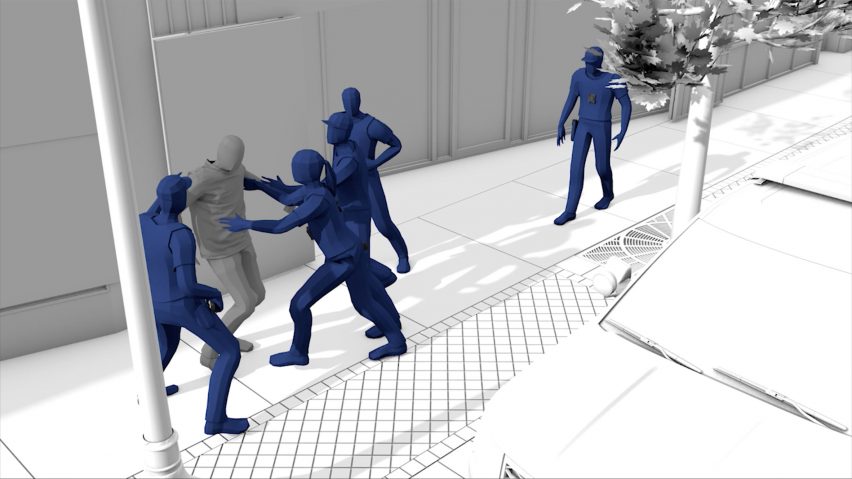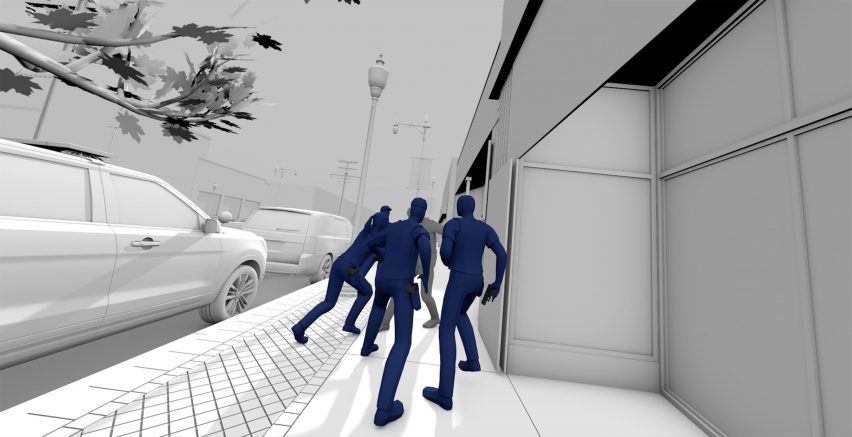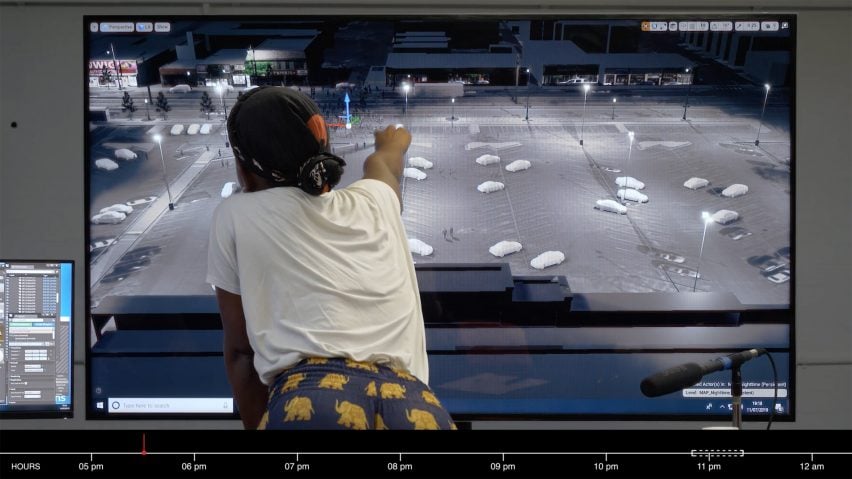Forensic Structure investigates Harith Augustus taking pictures in six movies
Forensic Structure and Invisible Institute have created six movies that examine the police’s killing of African-American barber Harith Augustus for this yr’s Chicago Structure Biennial.
Turner Prize-shortlisted analysis group Forensic Structure teamed up with Chicago’s Invisible Institute to analyze the loss of life of Augustus – a 37-year-old African-American barber who was shot lifeless by the Chicago Police Division (CPD) on 14 July 2018.
The challenge goals to discover the police’s “split-decision” to shoot Augustus, which it described as the results of an “armed confrontation”, and its conduct following the occasion.
Known as The Killing of Harith Augustus, the challenge is the most recent real-world investigation led by Forensic Structure, based in 2010 by Israeli architect Eyal Weizman. Others embrace an explorations into allegations of hyperlinks between human rights organisations and human traffickers, ethnic cleaning of the Yazidi folks by ISIS in Iraq and the deadly Grenfell Tower hearth in London.
 Forensic Structure and Invisible Institute have used video footage to reconstruct the July 2018 taking pictures to be able to examine the occasion
Forensic Structure and Invisible Institute have used video footage to reconstruct the July 2018 taking pictures to be able to examine the occasion
Working with Invisible Institute, the studio has collated the outcomes from challenge right into a video collection that discover Augustus’ killing in six completely different models of time: milliseconds, seconds, minutes, hours, days and years. Every makes use of video footage of the incident and reconstructions to unpack completely different elements of the occasion, together with Augustus’ actions, the CPD’s choice to shoot and the protests following the occasion.
The collection begins with Milliseconds, which questions the notion of the split-second choice of police workplace Dillan Halley, who shot Augustus 5 instances, and the opposite 4 officers on the scene. The video makes use of frames from CCTV and police bodycam footage to point out that Augustus was cooperating earlier than turning his again to the police to run away, suggesting that he was not attempting to shoot the police.
It additionally concludes that from a short shot of Augustus lifting his high as much as reveal a gun it’s not possible to verify if he was attempting to shoot, or regular the weapon and run away.
The movie additionally means that the police officer made a aware choice to fireside a fifth shot, as he takes a pause after taking pictures Augustus 4 instances in fast succession. He shoots him a fifth time when Augustus is already on the ground.
 The collection focuses on six “temporal lenses” calling to query the CPD’s choice to shoot Augustus and its actions within the aftermath
The collection focuses on six “temporal lenses” calling to query the CPD’s choice to shoot Augustus and its actions within the aftermath
Hours makes use of the account of Trina Reynolds-Tyler, an Invisible Institute researcher who attended the scene shortly afterwards, to reconstruct occasions following the taking pictures. It focuses on the violence that police used towards a gathering of locals in a parking zone throughout from the scene of the taking pictures.
Days unpacks the police’s dealing with of the proof within the aftermath. CPD launched two movies of the occasion known as Aggravated Assault to a Police Workplace. One, which was distributed to information channels, is edited to zoom right into a shot during which Augustus’ shirt is lifted to disclose the gun, making it seem he was pulling it to make use of towards police.

Forensic Structure to create 3D video of Grenfell Tower hearth
It additionally tracks occasions during which the Civilian Workplace of Police Accountability known as for CPD to launch all footage of the occasion. The power solely made a dashcam video accessible one yr after the incident, violating a protocol the police launched after an officer was convicted for the 2014 homicide of Laquan McDonald within the metropolis.
“We demonstrated that building of the official narrative began within the quick aftermath of the incident and that the CPD distorted recognized info and selectively launched the movies of their possession, in an effort to deflect the general public outrage provoked by the incident,” stated the studios.
 Among the many set is Hours, which makes use of the account of Invisible Institute researcher Trina Reynolds-Tyler to element protests that occurred shortly after the taking pictures
Among the many set is Hours, which makes use of the account of Invisible Institute researcher Trina Reynolds-Tyler to element protests that occurred shortly after the taking pictures
Minutes highlights that not one of the police turned on body-worn cameras on the applicable time, and makes use of police statements and witnesses so as to add subtitles to the footage, whereas Seconds investigates the actions of the officers. The latter means that the second when an officer grabs Augustus the incident triggers the occasion.
The fifth video Years is but to be launched however will examine the incident via residents of South Facet. “We examined the circumstances that formed the place during which Harith Augustus was killed: the persistence of hyper-segregation, the historical past of black armed self-defense, and the connection of policing to the circulation of life within the South Shore neighborhood,” stated the studio.
The Killing of Harith Augustus challenge is marked by an all-black set up on the Chicago Cultural Middle, which kinds the primary hub of the Chicago Structure Biennial, however the movies are solely accessible to observe on-line.
This yr’s biennial, titled …And Different Tales, is open to the general public from 19 September 2019 till Sunday 5 January 2020. The Killing of Harith Augustus is amongst numerous tasks within the biennial that goal to discover a wide-range of up to date themes below considered one of 4 curatorial brackets – No Land Past, Appearances and Erasures, Rights and Reclamations, and Widespread Floor.
Imagery is courtesy of Forensic Structure.